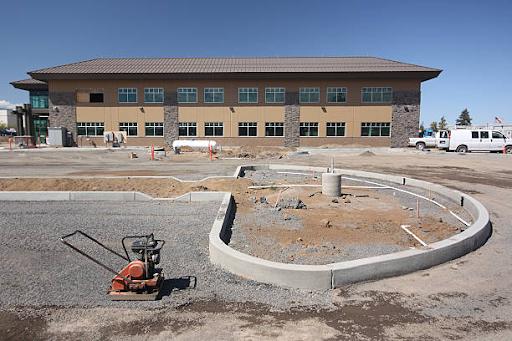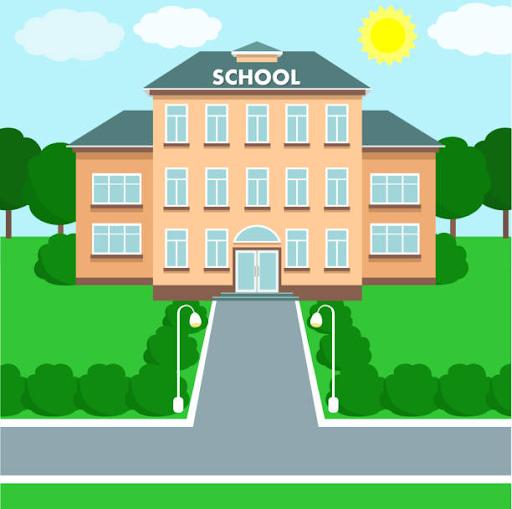How School Buildings Remodeling & Renovations Is Done
School building remodeling and renovations are crucial steps in ensuring that the learning environment is up-to-date, safe, and comfortable for students, teachers, and staff. This process typically involves updating the infrastructure, improving functionality, and enhancing the appearance of the building.
| Assessment |
| Get student input |
| Budget |
| Select a contractor |
| Start the work |
| Inspect the work |
Assessment
The first step in remodeling a school building is to assess the current state of the building and identify areas that need improvement. This involves evaluating the electrical and plumbing systems, roofing, insulation, windows, and other important components of the building. The goal is to determine the extent of the remodeling that is required and to develop a plan for the renovations.
Get student input
It’s important to involve students in the process of school building remodeling and renovations. Here are a few ways to get student input:
Student surveys: Administrators can distribute surveys to students to gather their opinions on what improvements they would like to see in the building.
Student focus groups: School officials can host focus groups where students can provide their thoughts and opinions on the renovations.
Student-led committees: School administrators can create committees composed of students, teachers, and staff to gather input and provide recommendations for the renovations.
Student design competitions: School officials can hold design competitions where students can submit their ideas for the renovations.
ProTip Takeaway: Involving students in the process of school building remodeling and renovations can help ensure that the learning environment meets their needs and provides the best possible educational experience. It also gives students a sense of ownership and responsibility over their learning environment.
Budget
Once the assessment is complete, the next step is to develop a budget for the remodeling project. This typically involves working with architects, engineers, and construction professionals to determine the cost of materials and labor.
The budget should also take into account any permits and inspections that may be required, as well as any additional expenses such as temporary relocation for students and staff during the construction process.
Select a contractor
Once the budget is in place, the next step is to select a contractor to carry out the remodeling work. This involves reviewing proposals from several contractors, checking references, and conducting site visits to evaluate their work.
The chosen contractor will then create a detailed construction plan that includes a timeline, a list of materials and equipment needed, and a detailed schedule for each phase of the construction process.
Start the work
Once the construction plan is in place, the remodeling work can start. During the construction process, it is important to ensure that students, teachers, and staff are protected from any potential hazards and that the work area is secure.
This may involve setting up barriers, using safety equipment, and implementing safety procedures to minimize the risk of accidents.
Inspect the work
Once the construction is complete, the final step is to inspect the work and make any necessary repairs. This is a critical step in ensuring that the building is safe and functional for students, teachers, and staff.
School building remodeling and renovations are an important part of maintaining the learning environment. Ensuring that the work is completed to the highest standards guarantees learning environment is safe, comfortable, and conducive to learning for students, teachers, and staff.
Benefits Of School Buildings Remodeling & Renovations
There are several benefits to school building remodeling and renovations:
Improved safety: Updating electrical and plumbing systems, installing fire safety systems, and improving insulation can make the building safer for students, teachers, and staff.
Enhanced functionality: Remodeling can help improve the functionality of classrooms, libraries, laboratories, and other areas within the building, making them more suitable for their intended purposes.
Increased energy efficiency: Updating heating and cooling systems, insulation, and windows can reduce the energy consumption of the building, saving money and reducing the school’s carbon footprint.
Improved accessibility: Renovations can help make the building more accessible for students and staff with disabilities by installing ramps, elevators, and other accommodations.
Better learning environment: A well-designed, modern, and comfortable learning environment can have a positive impact on student motivation and academic performance.
Increased property value: Updating a school building can increase its value, making it more attractive to potential buyers or renters in the future.
Extended building lifespan: Regular renovations and upgrades can help extend the life of a school building and delay the need for a costly replacement.
Important Areas To Include When Renovating Schools
When renovating schools, it’s important to focus on several key areas to ensure that the result meets the needs of students, teachers, and staff. Here are some key focus areas to consider:
Safety and accessibility: Ensure that the building meets current safety and accessibility standards and incorporates features such as fire safety systems, accessible routes, and emergency exits.
Technology: Consider incorporating technology into the building design, such as installing updated electrical and data systems, incorporating interactive whiteboards and other educational technology into classrooms, and providing Wi-Fi access throughout the building.
Energy efficiency: Consider ways to make the building more energy efficient, such as upgrading heating and cooling systems, improving insulation, and installing energy-efficient lighting.
Acoustics: Ensure that the building provides an acoustically appropriate environment for learning and teaching, such as using sound-absorbing materials in classrooms and minimizing echoing in common areas.
Learning environments: Ensure that classrooms, libraries, laboratories, and other learning spaces are well-designed, comfortable, and suitable for their intended purposes.
Aesthetics: Consider the overall look and feel of the building, incorporating design elements that are welcoming, and aesthetically pleasing, and help create a positive learning environment.
Insulation: Noise pollution can be a real problem, especially for schools located in cities. Insulating the external walls will help absorb the outside noise and provide a better learning environment.
Schools with multiple stories also need to have insulation between them. This is because the sound will travel between stories and light footsteps can become annoying for those below due to the lack of insulation in the floor structure.
ProTip Takeaway: Adding 20mm of stone wool insulation to a floor can help to reduce sound transmission by a factor of eight, creating a more acoustically appropriate environment for learning and teaching.
Student involvement: Consider ways to involve students in the renovation process, such as gathering their input through surveys, focus groups, or design competitions.
ProTip Takeaway: By focusing on these key areas, school building renovations can help create a safer, more functional, and more comfortable learning environment for students, teachers, and staff.
Renovation Depends On The Age And Condition Of A School Building
The type of renovation that a school building needs will depend on several factors, including its condition and age. Older buildings may require more extensive renovations to bring them up to modern standards, while newer buildings may only need updates or upgrades to accommodate changing needs.
For example, an older building may require structural upgrades, such as reinforcing the foundation, replacing the roof, or adding additional support beams. It may also require updates to electrical, plumbing, and HVAC systems, as well as insulation and windows to improve energy efficiency.
A newer building may only require updates to technology, such as upgrading data and electrical systems or adding interactive whiteboards and other educational technology to classrooms. It may also need renovations to address specific needs, such as reconfiguring classrooms or adding additional learning spaces.
It’s important to assess the condition and age of a building to determine the type of renovation it needs. This will help to ensure that the renovation project is effective and efficient and that the result meets the needs of students, teachers, and staff.
Renovation Strategies For Schools
There are three common renovation strategies for schools. It’s important to consider the condition and age of the building, as well as the budget and specific needs of the school when choosing a renovation strategy. These strategies include:
Adaptive reuse is a cost-effective option, as it involves repurposing existing spaces instead of tearing them down and starting from scratch. However, it can be challenging if there is a lack of necessary utilities, such as electrical or plumbing.
Retrofitting an old school can be more expensive, as it typically requires demolition and rebuilding. However, this strategy allows for a more comprehensive update and can help to meet current needs and standards.
Renovating an older building to meet current needs can be a more cost-effective option than building from scratch, but it still requires updating and upgrading various systems and components of the building.
In all cases, it’s important to consider environmental issues and use sustainable materials in the construction process to minimize waste and emissions and promote a healthy and sustainable learning environment.
Are you Looking for More Information Regarding school Remodeling?
School remodeling and renovation can help to create safe, modern, and efficient learning environments for students and teachers. With a focus on using sustainable materials, incorporating the latest technology, and improving accessibility and acoustics, Smart Remodeling LLC can help schools to meet their current needs and prepare for the future. Contact us today to learn more about our complete school remodeling and renovation services.











